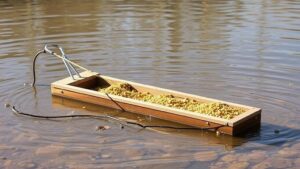Safety Tips for Working Around Fast-Moving Streams and Rivers
Safety Tips for Working Around Fast-Moving Streams and Rivers
The beauty and serenity of fast-moving streams and rivers often entice outdoor enthusiasts, workers, and researchers alike. But, these waterways pose significant risks due to their powerful currents and unpredictable nature. Understanding safety tips for working in these environments is essential to minimize dangers and ensure the well-being of individuals involved in related activities.
Understanding the Risks
Fast-moving streams and rivers can threaten those unprepared for their challenges. Among the various hazards are:
- Strong currents that can sweep individuals off their feet.
- Hidden obstacles such as rocks, logs, or underwater structures.
- Unexpected changes in weather, leading to sudden increases in water levels.
According to the National Weather Service, swift water incidents account for a notable share of water-related fatalities, highlighting the importance of awareness and preparedness.
Preparation is Key
Being proactive is vital when working near fast-moving waterways. Here are several tips to consider before heading out:
- Know the Environment: Research the specific river or stream before arrival. Use resources such as local river gauges to understand water levels and flow rates.
- Weather Awareness: Always check the forecast. Sudden storms can increase water levels rapidly, creating dangerous conditions.
- Proper Gear: Wear appropriate clothing and footwear. Waterproof boots with good traction can help prevent slips, while life jackets are essential for any water-related activity.
On-Site Safety Protocols
Once on-site, implementing safety measures can further protect individuals. Consider the following protocols:
- Buddy System: Work with a partner. This practice ensures assistance is available in case of emergencies.
- Establish a Safe Zone: Identify and maintain a designated area away from the waters edge where individuals can regroup during breaks.
- Stay Alert: Continuously monitor the changing conditions of the water, including speed and depth. Immediate awareness of ones surroundings can prevent accidents.
Emergency Preparedness
Even with precautions, accidents can happen. Preparing for emergencies is crucial:
- Emergency Kit: Carry a first-aid kit equipped to handle injuries that might occur around water, such as cuts or hypothermia symptoms.
- Communication Tools: Keep a charged mobile phone or a two-way radio to ensure connection in case of emergency. If traveling in remote areas, consider satellite phones.
- Rescue Techniques: Familiarize yourself with basic water rescue techniques. Knowing how to assist someone who has fallen into fast-moving water can save lives.
Case Studies and Real-World Applications
Numerous incidents underscore the importance of safety when dealing with fast-moving water. For example, a 2019 study by the American Society of Civil Engineers highlighted a tragic event where several field researchers underestimated the speed of river currents while conducting water quality tests. mishap resulted in injuries due to sudden falls into the water, showcasing the need for thorough training and safety measures.
On the other hand, organizations like the National Park Service have successfully implemented training programs that focus on risk awareness and safety protocols while conducting fieldwork in waterways, demonstrating the effectiveness of preparedness initiatives.
Concluding Thoughts and Takeaways
Working around fast-moving streams and rivers offers unique opportunities but comes with inherent risks. By understanding the potential dangers, preparing effectively, and implementing safety measures, workers and enthusiasts can significantly minimize risks associated with these powerful natural environments. Always prioritize safety, remain vigilant, and equip yourself with the necessary knowledge and tools for a secure experience on the water.


